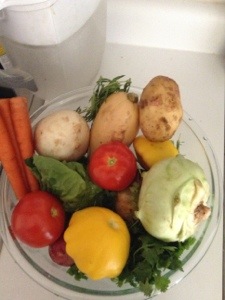>Canukistani, a fellow Canadian and a reader of this blog, noticed that I haven’t posted any recipes in a while, and gave me the gift of the following great post to share with everybody. It is not only useful, it’s funny like hell. I laughed so hard, I’m in actual pain right now. Enjoy! And never say that Canadians don’t have a sense of humor ever again. Thank you, Canukistani!!
Canadian Style Maple Syrup
(Eat your heart out Martha Stewart)
This is my recipe for making Maple syrup from scratch. You might wonder why not just buy it at the store. This stuff is damn expensive! Here’s a graph of the cost in various cities. And you think gas is pricey.
You’ll need: a map, 20 – 40 tree taps (sprules), 20 – 40 metal buckets with lids, drill, 7/16 “drill bit, hammer, 3 foot cloth measuring tape, two helpers, a cord of wood, three large iron kettles, hooks and iron chains, saw, axe, beer, thermometer, brix refractometer, filter sieve, oven mitts, tent, sleeping bags, shotgun, lamps, more beer and a variety of glass bottles with lids. One item which you won’t recognise is a tree tap or sprule.
This can be purchased at a Canadian Tire depot with dollars or Canadian Tire money which is Canada’s real currency.
 |
|
One item which you won’t recognise is a tree tap or sprule.
|
This can be purchased at a Canadian Tire depot with dollars or Canadian Tire money which is Canada’s real currency.
You may have not come across a brix refractometer either. Ditto Canadian Tire.
The first item on the agenda is to travel to an area which actually has sugar bush.
Good weather for sap production is night temperatures in the 20s F and sunny days with temperatures in the 40s F. This alternate freezing and thawing temperature cycle (which can also cause potholes on roads) causes the pressure changes inside the tree that makes the sap flow. If the night time temperatures are too cold, it takes a longer time for the sap to warm up and ‘run’ in the daytime. If the temperatures are very cold, the sap may not run at all.
WARNING! You might run into bears which have just wakened up from hibernation and are HUNGRY. Safety first. Bring at least one person who can’t run as fast as you. If you’re particularly Machiavellian buy insurance with yourself as the beneficiary. Alternatively do a Sarah Palin and arm yourself with a short barreled SxS 12 gauge with Remington Buckhammer slugs – don’t retreat. Reload!
Learn to recognize the right trees. Tapping an elm tree is pointless and embarrassing. The main maple producing tree is known as the Sugar Maple, or Hard Maple ( acer saccarum) which is the best provider of the highest quality sap. It grows as tall as 100 feet. A few of the other main types of maple trees are The Red Maple (acer rubrum), The Silver Maple (or Soft Maple) and The Ash Leafed Maple (or Box Elder) You may need to enlist the help of the indigenous people. They are friendly and will trade for Canadian Tire money.
 |
|
Local and two specimens of H. Canukistanus (two of my daughters)
|
Depending on the tree’s diameter and strength, it may be fitted with as many as three (3) taps. Use the cloth tape to measure the diameter. Trees with trunks less than 25 cm in diameter should not be tapped at all. Prudent tapping is harmless to the maple. Each tap will produce 10 gallons over a six week period.
Drill 1 cm (7/16″) holes about 5 cm (2-2 1/2″) into the trunk of the tree. Use the hammer to place the sprules into the tree. The sap will deteriorate if not attended to. The sap must be boiled the same day it is gathered, so a hot and steady fire is kept going at all times.
The “boiling down” process is slow – sometimes continuing far into the night. Bring lots of beer. Evaporation that is too slow or too fast will affect the color, flavour and texture of the syrup. At sea level, the correct temperature for evaporation is 104ºC. However, since the boiling point varies with altitude, a thermometer must be used to adjust the cooking temperature. For example, in a region where the boiling point of water is 98ºC (or 2ºC below normal), the cooking temperature of the sap must also be reduced by 2ºC (to 102ºC

I use the three kettle method where I put the raw sap which has the consistency of water into the first kettle and then transfer the more concentrated sap into the second. Repeat from the second kettle to the third where the final evaporation takes place. It takes about 40 gallons of sap to make one gallon of syrup. If you use maples other than the sugar maple, the syrup will be darker because the other trees have a lower concentration of sugar and the boiling will take longer.
Maple syrup must be filtered to remove the impurities that could affect its appearance and flavour. Orlon or felt make good filters. Filters should be cleaned with hotwater only (no detergent) and dried thoroughly before and after each use. New filters must be washed before use. Bottles or jars used to store syrup should also be cleaned and rinsed prior to bottling. It is important to adjust the density to between 66º and 67º Brix (the Brix unit of measurement indicates the risk of fermentation or crystallization). Use the brix refractometer. The syrup is then bottled or put in galvanized metal cans while still very hot (87ºC or more). The heat sterilizes the containers and prevents the formation of mold.
You can use maple syrup as a replacement for sugar in any recipe.













































